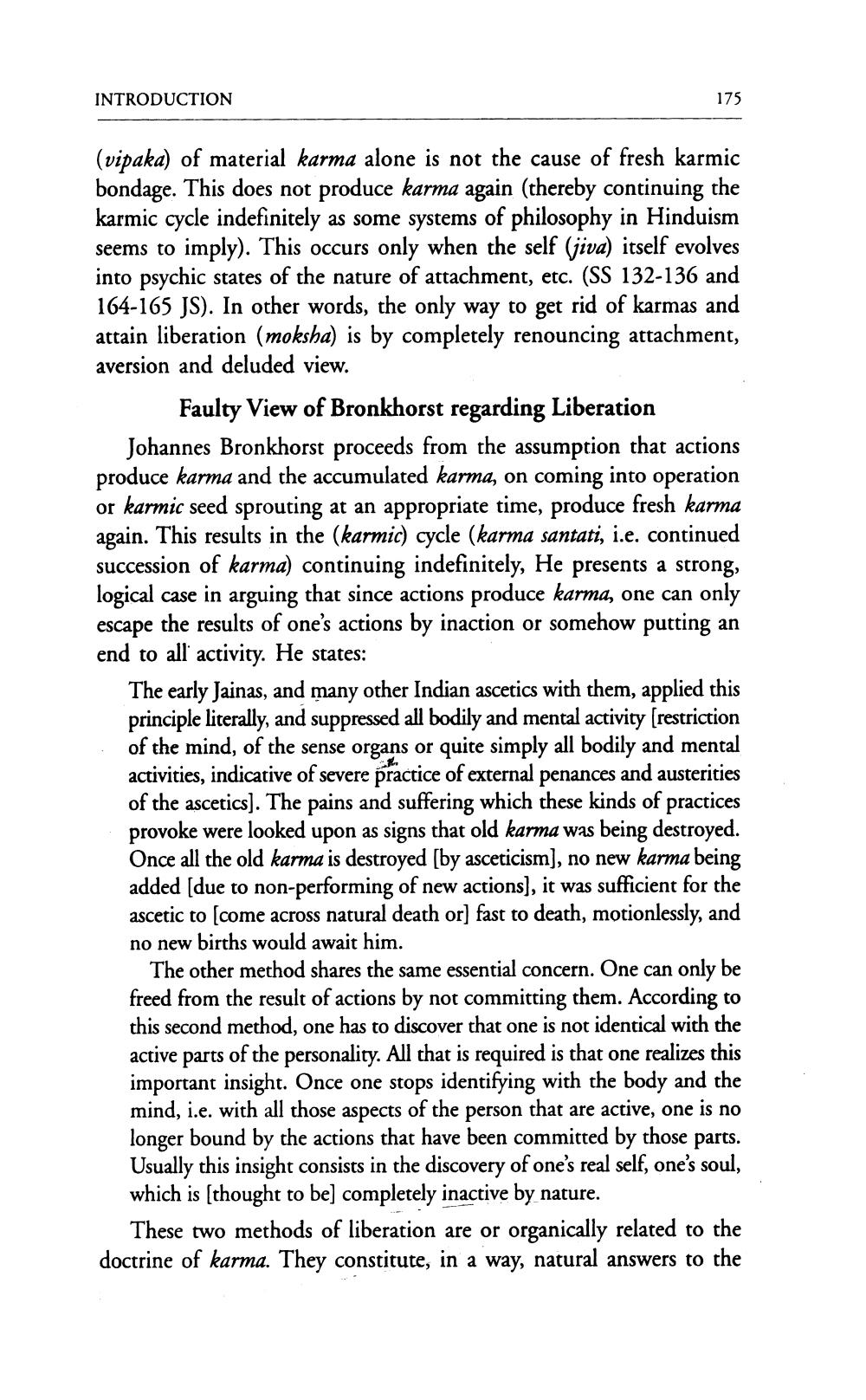________________
INTRODUCTION
175
(vipaka) of material karma alone is not the cause of fresh karmic bondage. This does not produce karma again (thereby continuing the karmic cycle indefinitely as some systems of philosophy in Hinduism seems to imply). This occurs only when the self (jiva) itself evolves into psychic states of the nature of attachment, etc. (SS 132-136 and 164-165 JS). In other words, the only way to get rid of karmas and attain liberation (moksha) is by completely renouncing attachment, aversion and deluded view.
Faulty View of Bronkhorst regarding Liberation Johannes Bronkhorst proceeds from the assumption that actions produce karma and the accumulated karma, on coming into operation or karmic seed sprouting at an appropriate time, produce fresh karma again. This results in the (karmic) cycle (karma santati, i.e. continued succession of karma) continuing indefinitely, He presents a strong, logical case in arguing that since actions produce karma, one can only escape the results of one's actions by inaction or somehow putting an end to all' activity. He states:
The early Jainas, and many other Indian ascetics with them, applied this principle literally, and suppressed all bodily and mental activity (restriction of the mind, of the sense organs or quite simply all bodily and mental activities, indicative of severe practice of external penances and austerities of the ascetics]. The pains and suffering which these kinds of practices provoke were looked upon as signs that old karma was being destroyed. Once all the old karma is destroyed [by asceticism), no new karma being added (due to non-performing of new actions), it was sufficient for the ascetic to (come across natural death or] fast to death, motionlessly, and no new births would await him.
The other method shares the same essential concern. One can only be freed from the result of actions by not committing them. According to this second method, one has to discover that one is not identical with the active parts of the personality. All that is required is that one realizes this important insight. Once one stops identifying with the body and the mind, i.e. with all those aspects of the person that are active, one is no longer bound by the actions that have been committed by those parts. Usually this insight consists in the discovery of one's real self, one's soul, which is (thought to be completely inactive by nature.
These two methods of liberation are or organically related to the doctrine of karma. They constitute, in a way, natural answers to the




